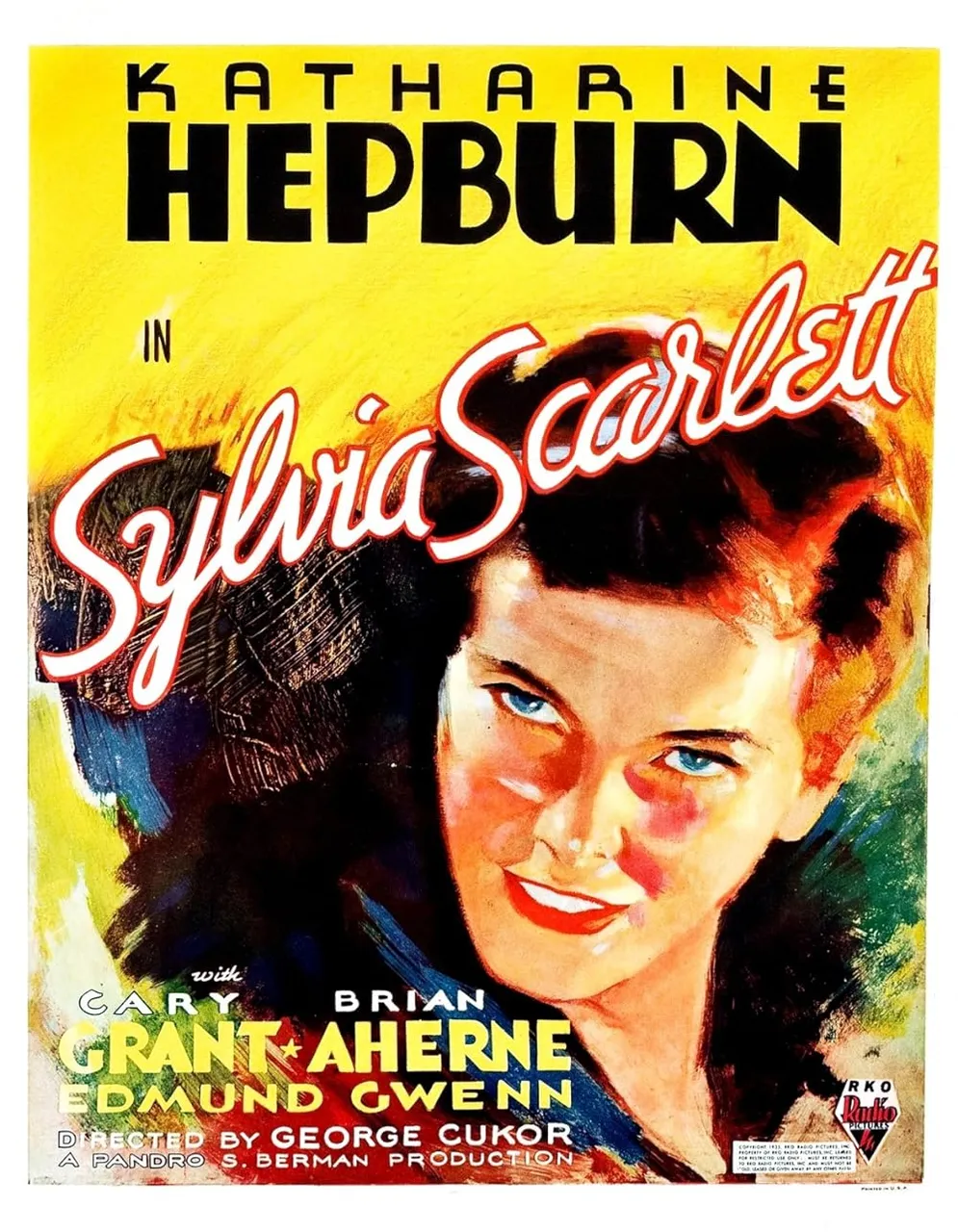
The film Sylvia Scarlett is a 1935 American romantic comedy starring Katharine Hepburn and Cary Grant. Directed by George Cukor, the movie follows Sylvia Scarlett, played by Hepburn, who disguises herself as a boy to escape to England with her father, portrayed by Edmund Gwenn. The film delves into themes of gender ambiguity, romance, and comedy, making it a unique and daring production of Hollywood's studio era. Despite its bold approach, the film was initially unsuccessful but has gained a cult following over time.
Plot
The plot of the 1935 film Sylvia Scarlett revolves around a young woman named Sylvia Scarlett, who disguises herself as a boy named Sylvester to escape to England with her father, Henry Scarlett, who is fleeing from embezzlement charges. Along the way, they meet a con artist named Jimmy Monkley and a giddy housemaid named Maudie Tilt, forming an unconventional group. As they embark on various adventures, Sylvia's true identity remains hidden until she meets The Artist Michael Fane, leading to romantic entanglements and complications. The story unfolds with elements of comedy, drama, and romance, challenging traditional gender norms and societal expectations.
Trailer
@taskmaster4450le/re-leothreads-2wcy8srhr
Cast
The full cast for the 1935 film Sylvia Scarlett is quite extensive, but here are the main credited actors:
- Katharine Hepburn as Sylvia Scarlett / Sylvester
- Cary Grant as Jimmy Monkley
- Brian Aherne as Michael Fane
- Edmund Gwenn as Henry Scarlett
Some other notable credited actors include:
- Dennie Moore as Maudie
- Natalie Paley as Lily
- Lennox Pawle as the Drunk
Director: George Cukor
Writer: Compton MacKenzie, Gladys Unger, John Collier, Mortimer Offner
Distributor: RKO Radio Pictures
Genre: Comedy, Drama
Release Date (Theaters): Jan 3, 1936
Release Date (Streaming): APR 1, 2012
Theme
The theme of the 1935 film Sylvia Scarlett revolves around gender ambiguity, societal norms, and romantic entanglements. The movie challenges traditional gender roles as the main character, Sylvia Scarlett, disguises herself as a boy named Sylvester to escape with her father. Throughout the film, Sylvia's journey explores themes of identity, self-discovery, and the complexities of relationships. Additionally, the narrative delves into the idea of unconventional love and the fluidity of gender expression, making it a daring and ahead-of-its-time production that defies typical Hollywood conventions.
Reception
The reception of the film Sylvia Scarlett was initially mixed, with critics having varying opinions on the movie. Despite not being a commercial success upon its release, the film has garnered a cult following over time. The movie's bold approach to themes of gender ambiguity and societal norms, along with its unique storyline, has contributed to its reevaluation and appreciation by audiences. While some critics may have had reservations about the film's unconventional narrative and character portrayals, others have come to recognize its daring nature and ahead-of-its-time exploration of identity and relationships.
Production Challenge
The production of the film Sylvia Scarlett faced challenges related to strict Production Code censorship. Despite these obstacles, the movie managed to overcome these hurdles and brought a unique representation of queerness to Hollywood screens. The film's ability to navigate and transcend the limitations imposed by censorship regulations highlights its significance as a pivotal moment for queer representation in the Hollywood industry.
Setting
The settings in the film Sylvia Scarlett are diverse and contribute to the unique atmosphere of the movie. The story unfolds in various locations, showcasing a range of environments beyond a shoestring budget. From England to France, the characters navigate through different settings that add depth to the narrative. The film's settings play a crucial role in shaping the characters' experiences and interactions, creating a rich backdrop for the unfolding plot.
Visual Styles & Settings
The visual styles and techniques in feminist film theory encompass a range of elements that challenge traditional cinematic norms and explore gender representations. These techniques often involve subverting the male gaze, deconstructing stereotypes, and highlighting the complexities of female characters. Some key visual styles and techniques include:
Masquerade and Fetishization: Feminist film theory often critiques the portrayal of women as fetishized objects for the male gaze. The masquerade involves women using their bodies as a disguise, challenging traditional femininity and subverting male-dominated narratives.
Mirror Shots and Split Subjectivity: The use of mirror shots in films can symbolize the mental processes related to self-recognition and split subjectivity. This technique, as discussed by Kaplan, illustrates a character's recognition of their fragmented identity and challenges the notion of women being split narratively.
Counter-Cinema Techniques: Feminist counter-cinema disrupts traditional cinematic forms by incorporating self-reflexivity, non-realistic elements, and unconventional storytelling methods. This approach aims to challenge dominant narratives and offer alternative perspectives on gender and representation.
Soundtrack Elements: In feminist films, the soundtrack can play a crucial role in conveying themes and emotions. Elements like repeated laughs, shrieks, or heartbeats can create tension and add layers of meaning to the narrative, enhancing the viewer's engagement with the film.
Trivia & Fun fact
- Cary grant performed his own tumbling stunts in the film "Holiday" (1938) as he was part of an acrobatic troupe in Vaudeville before becoming an actor.
- Katharine Hepburn starred alongside Cary Grant in four movies, including Sylvia Scarlett (1935), "Bringing Up Baby" (1938), and "The Philadelphia Story" (1940).
- The character Linda Seton in "Holiday" was loosely based on Gertrude Sanford Legendre, a former debutante who became a big-game hunter and later spied for the OSS during WWII.
- Edward Everett Horton repeated his role of Nick Potter in "Holiday" (1938), which he also played in the previous version of the film released in 1930.
General:
Page by @iskafan
